…there is an App for that…
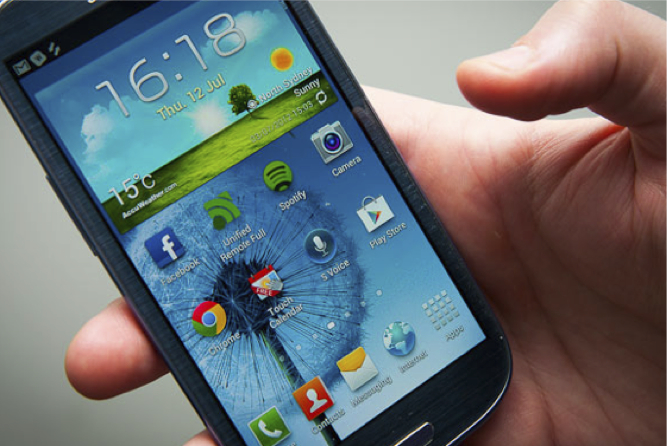 While working at the computer this evening I found myself smiling about the power of the IT tools now helping me live my professional and personal life. Despite being in senior CIO positions during my earlier career, my glib slogan has always been, “information technology really doesn’t work.” By that I meant it is difficult to operate IT devices that improve our lives, without the hassle factor over riding the productivity gains. A good example continues to be video tele-conference meetings. Most are too complicated to set-up, for the small value gained through low quality images.
While working at the computer this evening I found myself smiling about the power of the IT tools now helping me live my professional and personal life. Despite being in senior CIO positions during my earlier career, my glib slogan has always been, “information technology really doesn’t work.” By that I meant it is difficult to operate IT devices that improve our lives, without the hassle factor over riding the productivity gains. A good example continues to be video tele-conference meetings. Most are too complicated to set-up, for the small value gained through low quality images.
But, my slogan has finally outlived its previous reality. One awesome technology I use daily is the navigation functions on my smart phones, tablet computers, and desktop computers. 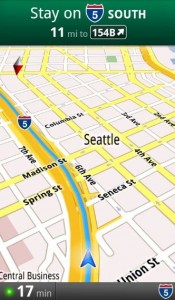 This one function has become so effective in my daily life, that it cancels out all of the remaining hassle factors associated with these devices. In the case of navigation, my ability to set up a lunch appointment, share the exact location and time, pull it up in my navigator to direct me there, and make that all happen within minutes, truly a productivity gain. In a previous time that would have represented at one to two hours of admin assistent time (multiplied by the number of attendees) plus the cost of printed pages I would have carried, while getting lost along the way!
This one function has become so effective in my daily life, that it cancels out all of the remaining hassle factors associated with these devices. In the case of navigation, my ability to set up a lunch appointment, share the exact location and time, pull it up in my navigator to direct me there, and make that all happen within minutes, truly a productivity gain. In a previous time that would have represented at one to two hours of admin assistent time (multiplied by the number of attendees) plus the cost of printed pages I would have carried, while getting lost along the way!
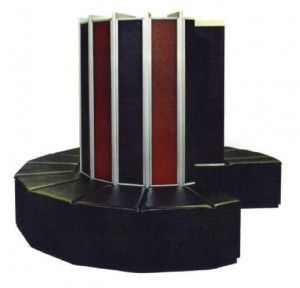 The reality is that the power of our end-user devices has been sneaking up on us technology lovers over the past two decades. A recent IDA study on Mega Trends Reshaping C2 shows that today’s smart phones have more compute power than the World’s fasted super computer did in 1979. That first Cray 1 super computer ran at 100 MegaFlops, weighed 5.5 tons, cost $8M then, ran 8 MegaBytes of RAM, with 32 GigaBytes of storage in a separate large room. In just over 30 years we have inherited the privilege of carrying a Cray 1 in our pocket integrated with the additional functions of radios for the Global Positioning System, the mobile cellular infrastructure, and WiFi, a photo quality color screen, HD video and still cameras, plus magnetic and acceleration sensors to support applications. Interestingly, to make the miracle of my productive lunch appointment possible, it takes this much smart phone capability supported by available mobile telecommunications and cloud infrastructures.
The reality is that the power of our end-user devices has been sneaking up on us technology lovers over the past two decades. A recent IDA study on Mega Trends Reshaping C2 shows that today’s smart phones have more compute power than the World’s fasted super computer did in 1979. That first Cray 1 super computer ran at 100 MegaFlops, weighed 5.5 tons, cost $8M then, ran 8 MegaBytes of RAM, with 32 GigaBytes of storage in a separate large room. In just over 30 years we have inherited the privilege of carrying a Cray 1 in our pocket integrated with the additional functions of radios for the Global Positioning System, the mobile cellular infrastructure, and WiFi, a photo quality color screen, HD video and still cameras, plus magnetic and acceleration sensors to support applications. Interestingly, to make the miracle of my productive lunch appointment possible, it takes this much smart phone capability supported by available mobile telecommunications and cloud infrastructures.
Although the miracle of global mobile networks and powerful end-user devices is mind boggling, the future is all about human focused IT devices. By beginning to focus on we humans, Apple Computer Inc. has recently become the largest company on our planet. But as well designed as Apple products are, they have only begun to address our human needs. Our future is about devices that are context aware! A simple example is the use of context aware smart phone apps such as Yelp.  By knowing where you are on the planet, and what time of day it is, Yelp provides users with information limited to places that are geographically close and available. In the case of restaurant choices, it shows those that are open, and then provides access to each restaurant’s menu and user ratings. If you want to dine in one, it offers to make the reservation and navigate you there.
By knowing where you are on the planet, and what time of day it is, Yelp provides users with information limited to places that are geographically close and available. In the case of restaurant choices, it shows those that are open, and then provides access to each restaurant’s menu and user ratings. If you want to dine in one, it offers to make the reservation and navigate you there.
Their are hundreds of these Yelp-like apps emerging today but they are just the beginning of this new context aware user-focused IT paradigm. Context aware computing is now reaching out into smart devices meant to be worn most or all of the time. 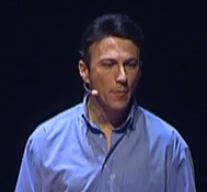 For example Fitbit tracks my daily activity and advises me on how many calories I should consume to maintain, lose, or gain weight. In the future, sensors like Fitbit may be woven into our clothing. Daniel Kraft’s TED talk — Medicine’s Future? There’s an app for that, provides an wonderful glimpse into this future.
For example Fitbit tracks my daily activity and advises me on how many calories I should consume to maintain, lose, or gain weight. In the future, sensors like Fitbit may be woven into our clothing. Daniel Kraft’s TED talk — Medicine’s Future? There’s an app for that, provides an wonderful glimpse into this future.
…as this smart device revolution continues to mature, one day we may all agree that “IT really is starting to deliver”…

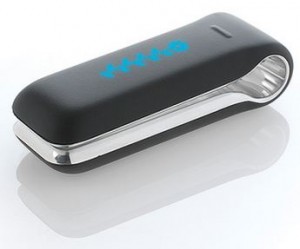
Very interesting and timely. I tried to sell this vision to HP when I was CTO/Software a decade ago. As part of that I wrote a book called Radical Simplicity: Transforming Computers into Me-Centric Computing. It’s still available and relevant at Radical Simplicity
Many people think the book provides an appropriate guide to the world that’s coming about as you describe. It goes much further, to assume that the architectural stack is turned inside out, and the human becomes the center, with layers of technology growing out from the user to add understanding of the the person’s context, tasks, intent, preferences, etc. In this way, a person’s wish can be easily converted into a command that the cloud of services can appropriately accomplish.
Seemed to obvious to me, that when we live in a world of 700,000 apps, people won’t be able to learn which ones are pertinent and how to use them. That day has arrived.
Your blog is a gem. Keep it going!
Thanks Rick, your research on VIRT (valuable information at the right time) has been inspiring to me for all the reasons you mention.
Marv, nice post. Thought this quote would be of interest, “Coupled with the almost unlimited computing power from the cloud available to smartphones through wireless connectivity, the capability to see, hear, smell, continuously will make our smartphones truly like a human companion.” Lin Zhong, Rice University
In terms of context aware smartphones, have you seen Google Now in action?
It tells you today’s weather before you start your day, how much traffic to expect before you leave for work, when the next train will arrive as you’re standing on the platform, or your favorite team’s score while they’re playing. And the best part? All of this happens automatically. Instant information cards appear throughout the day at the point of need. See video http://www.google.com/landing/now/
Agree that many current video conferencing systems are difficult especially in the Enterprise. Some still are Flash based. Have your tried Hangouts yet, the group video chat capability? It is basically device, OS, and browser independent. Be interested in your feedback.
Thanks Jim good points. I thought about going down the Google Hangout path because it does create that new video connected paradigm that could be a revolution to that legacy area…
Good post Marv. I think we may reach the singularity sooner rather than later. In keeping with the “technology and meals” theme, I provide the following Haiku-esqe comment>>>>>>>>>
… hosted my daughter and her two friends for dinner at a local sushi restaurant..
… they asked what I did and I told them I was working cloud computing and big data..
… they were duly impressed..
…After a saki-bombs and some incredible raw fish, I noticed the background music consisted of a lone guitarist with a mellow baritone..
…innocently asked the underdressed, tatooed waitress what CD she had playing..
…my three young companions, in unison, shouted Shazam! and held up their iPhones to collect 10 second snippets of audio…
…acoustic fingerprint… advanced signals analysis… voice and instrument… 10 years old capability. Provided artist, song, genre, date and other metadata.
…they then showed it to me on the iPhone screen..
… had never heard of Shazam, was embarrassed..
…they were no longer impressed..
…more embarassed because glasses were in the car and I had to ask my young colleague to read the screen..
…they didn’t consider irony of the situation, but it wan an “event” for for me..
…picked up the tab..
…old dogs can learn new tricks, but we may learn them too slowly..
Great points. We can also look around with our smart phone cameras using Google Goggles which is like Shazam but uses images… Interesting thing to this old dog is that the young people can’t appreciate why what they are doing is so revolutionary…
Also key is Information starting to deliver. Critical to this is the erosion of stigma around the sharing of information with respect to this bundle of sensors that are upon us at nearly all times. We are there! The indicators that will be developed to better inform policy, healthcare policy for example, will be game changing. Kind of like what we worked on several years back. 🙂
Good points Matt! I see the younger generations, like yourself, for less concerned about information sharing than the older generations. It will be interesting to see it play forward…